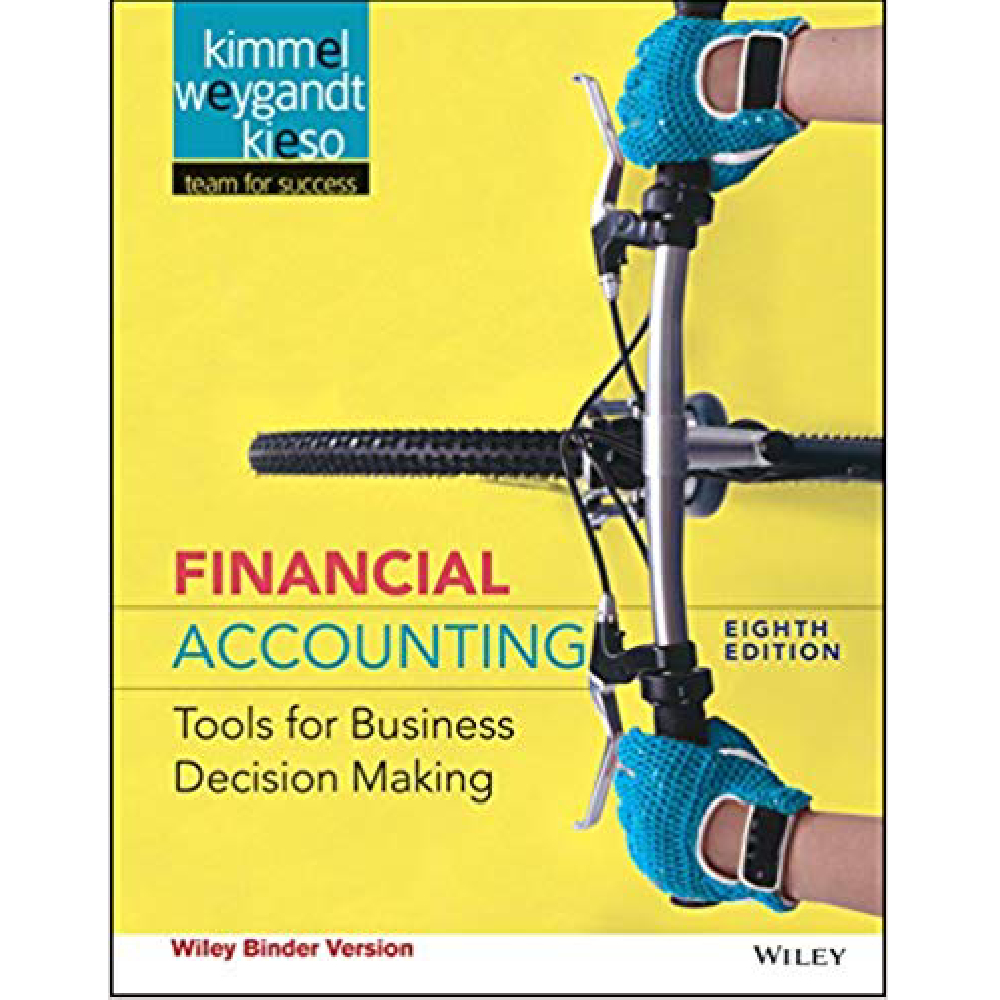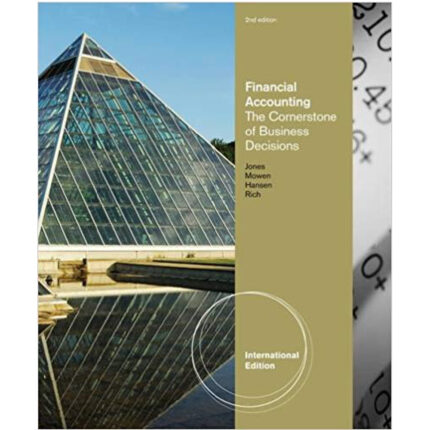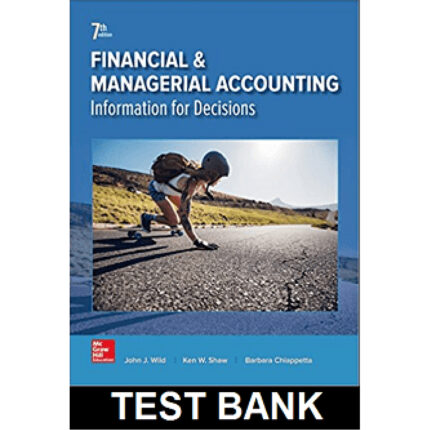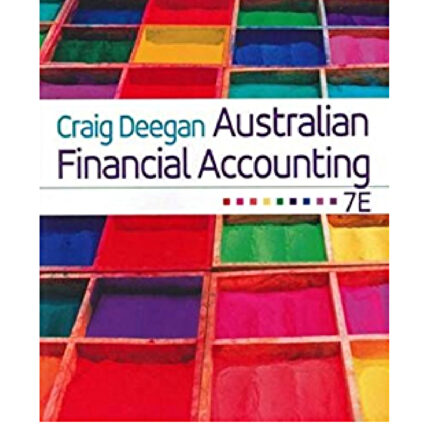Financial Accounting Tools For Business Decision Making 8th Edition By Kimmel – Test Bank
Be. 213
1. Name at least three advantages of a corporation.
2. Corporations acquire treasury stock for a variety of purposes. Name three reasons why a corporation may acquire treasury stock.
Ans: N/A, LO: 1,2, Bloom: K, Difficulty: Easy, Min: 9, AACSB: Communications, AICPA BB: Legal/Regulatory Perspective, AICPA FC: None, AICPA PC: Communications, IMA: Business Economics
Solution 213 (9–12 min.)
1. Advantages of a corporation:
(a) Separate legal existence
(b) Limited liability of stockholders
(c) Transferable ownership rights
(d) Continuous life
(e) Ability to acquire capital
2. Reasons why a company may acquire treasury stock:
(a) To reissue the shares to officers and employees under bonus and stock compensation plans
(b) To increase trading of the company’s stock in the securities market in the hopes of enhancing its market value
(c) To have additional shares available for use in the acquisition of other companies
(d) To reduce the number of shares outstanding and, thereby, increase earnings per share
(e) To prevent a hostile takeover.
Be. 214
Identify (by letter) each of the following characteristics as being an advantage or a disadvantage of the corporate form of business or not applicable to the corporate form of business organization.
A = Advantage
D = Disadvantage
N = Not Applicable
Characteristics
1. Separate legal entity
2. Taxable entity resulting in additional taxes
3. Continuous life
4. Unlimited liability of owners
5. Government regulation
6. Separation of ownership and management
7. Ability to acquire capital
8. Ease of transfer of ownership
Ans: N/A, LO: 1, Bloom: K, Difficulty: Easy, Min: 3, AACSB: None, AICPA BB: Legal/Regulatory Perspective, AICPA FC: None, AICPA PC: None, IMA: Business Economics
Solution 214 (3–5 min.)
1. A 5. D
2. D 6. A and D
3. A 7. A
4. N 8. A
Be. 215
Patrick Corporation is authorized to issue 1,000,000 shares of $1 par value common stock. During 2016, the company has the following stock transactions.
Jan. 15 Issued 700,000 shares of stock at $7 per share.
Sept. 5 Purchased 20,000 shares of common stock for the treasury at $8 per share.
Dec. 6 Declared a $0.50 per share dividend to stockholders of record on December 20, payable January 3, 2017.
Instructions
Journalize the transactions for Patrick Corporation.
Ans: N/A, LO: 2, Bloom: K, Difficulty: Medium, Min: 5, AACSB: Analytic, AICPA BB: Legal/Regulatory Perspective, AICPA FC: Measurement, AICPA PC: Problem Solving, IMA: FSA
Solution 215 (5–7 min.)
Jan. 15 Cash 4,900,000
Common Stock 700,000
Paid-in Capital in Excess of Par Value—Common Stock 4,200,000*
*(Sell. pr./sh. – par val.) × 700,000 sh.
Sept. 5 Treasury Stock 160,000
Cash 160,000
Dec. 6 Cash Dividends 340,000
Dividends Payable 340,000
(700,000 – 20,000) × $.50
(sh. iss. – trea. sh.) × div./sh.
Be. 216
An inexperienced accountant for Teahan Corporation made the following entries.
July 1 Cash 170,000
Common Stock 170,000
(Issued 20,000 shares of no-par common stock,
stated value $5 per share)
Sept. 1 Common Stock 36,000
Retained Earnings 24,000
Cash 60,000
(Purchased 4,000 shares issued on July 1 for the
treasury at $15 per share)
Instructions
On the basis of the explanation for each entry, prepare the entry that should have been made for the transactions. (Omit explanations.)
Ans: N/A, LO: 2, Bloom: AP, Difficulty: Medium, Min: 5, AACSB: Analytic, AICPA BB: Legal/Regulatory Perspective, AICPA FC: Measurement, AICPA PC: Problem Solving, IMA: FSA
Solution 216 (5–7 min.)
July 1 Cash 170,000
Common Stock 100,000
Paid-in Capital in Excess of Stated Value—Common Stock 70,000*
*[Sell. pr. – (20,000 × par val./ sh.)]
Sept. 1 Treasury Stock 60,000
Cash 60,000
Be. 217
On January 1, 2017, Wooden Company issued 16,000 shares of $2 par value common stock for $120,000. On March 1, 2017, the company purchased 2,000 shares of its common stock for $15 per share for the treasury.
Instructions
Journalize the stock transactions of Wooden Company in 2017.
Ans: N/A, LO: 2, Bloom: AP, Difficulty: Medium, Min: 5, AACSB: Analytic, AICPA BB: Legal/Regulatory Perspective, AICPA FC: Measurement, AICPA PC: Problem Solving, IMA: FSA
Solution 217 (5 min.)
Jan. 1 Cash 120,000
Common Stock 32,000
Paid-in Capital in Excess of Par Value—Common Stock 88,000*
*[Sell. pr. – (16,000 × par val./ sh.)]
March 1 Treasury Stock 30,000
Cash 30,000
Be. 218
Samson Company had the following transactions.
1. Issued 5,000 shares of $100 par preferred stock at $107 for cash.
2. Issued 8,000 share of common stock with a par value of $10 for $120,000.
3. Purchased 500 shares of treasury common stock for $12,000.
Instructions
Prepare the journal entries to record the above stock transactions.
Ans: N/A, LO: 2,3, Bloom: AP, Difficulty: Medium, Min: 5, AACSB: Analytic, AICPA BB: Legal/Regulatory Perspective, AICPA FC: Measurement, AICPA PC: Problem Solving, IMA: FSA
Solution 218 (5 min.)
1. Cash 535,000
Preferred Stock 500,000
Paid-in Capital in Excess of Par Value—Preferred Stock 35,000*
*(Sell. pr./sh. – par val./ sh.) × 5,000
2. Cash 120,000
Common Stock 80,000
Paid-in Capital in Excess of Par Value—Common Stock 40,000*
*[Sell. pr. – (8,000 × par val./ sh.)]
3. Treasury Stock 12,000
Cash 12,000













Reviews
There are no reviews yet.